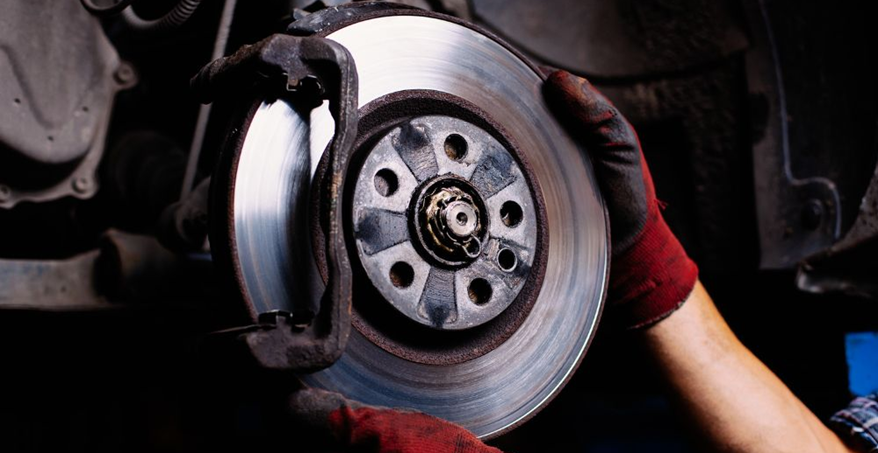Ensure your safety and save money by regularly inspecting your car’s braking system.
Brakes are among the most critical safety features in your vehicle, yet they often go unnoticed until something goes wrong.
Regular brake inspections not only protect you and your passengers but also help you avoid expensive repairs. Ignoring brake issues can lead to accidents, decreased vehicle performance, and ultimately higher maintenance costs.
Understanding the importance of regular brake inspections can significantly enhance your driving safety and save money over time.
Why regular brake inspections matter
Regular inspections identify brake wear early, preventing serious safety hazards. Typical braking systems include brake pads, rotors, calipers, brake lines, and fluid. Each component can degrade over time, impacting vehicle safety and performance. A routine inspection ensures each part remains in optimal condition, keeping you safe on the road and minimizing repair costs.
Brake pad replacements typically cost between $150 to $300 per axle, depending on vehicle make and model. Replacing brake rotors and calipers can run from $300 to over $800, highlighting why preventative maintenance is financially prudent.
Signs that indicate your car needs a brake inspection
Understanding the symptoms of brake issues can prevent small problems from escalating into expensive repairs or dangerous situations. Common signs your car needs immediate attention include:
-
Squealing or grinding noises: Loud sounds while braking usually indicate worn brake pads. Promptly addressing this prevents further rotor damage.
-
Vibration or shaking: Vibrations in the steering wheel or brake pedal can indicate uneven wear or warped rotors.
-
Soft or spongy brake pedal: If your pedal feels less firm or sinks toward the floor, brake fluid leakage or air in the brake lines might be the cause.
-
Longer stopping distances: An increase in stopping distance signals reduced braking efficiency, often related to brake pad or fluid issues.
-
Brake warning lights: Dashboard indicators specifically designed for brakes must never be ignored, as they signify immediate attention.
Recommended intervals for brake inspections
Experts recommend inspecting your brakes at least every 12,000 to 15,000 miles or at each scheduled oil change. However, vehicles used extensively in urban or mountainous areas, or those frequently towing heavy loads, may require more frequent checks due to increased wear on braking components.
Cost benefits of regular brake maintenance
Maintaining your brakes regularly reduces the likelihood of costly repairs later. For example, a set of quality brake pads for vehicles like the Toyota Camry ($25,000–$35,000) typically costs around $150–$250. If neglected, worn brake pads damage rotors, significantly increasing repair expenses to between $400–$800.
Luxury models like the BMW X5 ($65,000–$80,000) can incur costs upwards of $1,000 if brake components like rotors and calipers are severely damaged due to neglect. Regular inspections ensure your brake system stays within budget, avoiding surprise repairs that strain your wallet.
Brake inspections for electric and hybrid vehicles
With the growing popularity of electric and hybrid vehicles such as the Tesla Model 3 ($40,000–$55,000) or Toyota Prius ($28,000–$35,000), brake inspection remains equally crucial. Although regenerative braking in these vehicles reduces pad wear, brake fluid still needs regular replacement approximately every two years to maintain optimal braking performance and avoid moisture contamination.
Essential brake inspection checklist
A thorough brake inspection by a professional mechanic typically includes:
-
Measuring brake pad thickness (minimum acceptable thickness is generally around 3 mm)
-
Inspecting rotors for wear, corrosion, or warping
-
Checking calipers for leaks, corrosion, and proper operation
-
Examining brake lines and hoses for leaks or damage
-
Testing brake fluid quality and moisture content (replacement recommended every 2 years)
DIY versus professional brake inspections
Basic brake checks, such as inspecting brake fluid levels and listening for unusual noises, are tasks car owners can do themselves. However, comprehensive inspections involving brake pad replacements, rotor measurements, or fluid flushes should always be handled by certified professionals. Professional inspections ensure precise diagnosis and repair, guaranteeing optimal safety and reliability.
Potential risks of ignoring brake inspections
Failing to regularly inspect your vehicle’s brakes carries severe consequences, including:
-
Increased risk of accidents due to brake failure or diminished stopping power
-
Higher maintenance costs as minor issues escalate into expensive repairs
-
Decreased resale value due to neglected maintenance history
Regular brake inspections represent a modest investment compared to the costs and risks associated with neglected brake maintenance.
Keep your car and passengers safe through routine inspections
Prioritizing brake system health significantly enhances your safety, vehicle reliability, and long-term savings. Ensuring regular inspections keeps your car ready for every journey and protects your investment, providing peace of mind every time you hit the brakes.


